POMONA HAS ITS own ever-evolving set of unique words that only have meaning on the Pomona campus. Here are a few special words and phrases that are vital to understanding life at Pomona today.
Spo-gro — Short for “sponsor group,” this is a word students are likely to hear frequently during their first year at Pomona, and possibly for the rest of their lives. Designed to help students make a smooth transition to college, the Sponsor Program clusters first-year students into sponsor groups of about 15 students who live together in a residence hall, along with older students who help them settle into the Pomona community.
OA — OA stands for Orientation Adventure, the three-day trip that all first-years go on before they start class. There are various derivations of this word, such as “OA-by,” which is what you may be introduced as if you encounter your OA leader at a party.
Table Manners, Pub, Bloc, Tap — At Pomona, the term “Table Manners” doesn’t refer to a set of polite social behaviors every student should learn. For today’s Sagehens, it’s the name of a party thrown in Doms Lounge of the Smith Campus Center every Tuesday night. Other parties that take place on campus weekly have equally cryptic names, such as Pub, Bloc and Tap.
 The number of gallons of water the College expects to save each year due to new pH controllers installed on its 10 water-cooling towers. Purchased last March, the new controllers reduce the number of water replacement cycles in building air conditioning systems.
The number of gallons of water the College expects to save each year due to new pH controllers installed on its 10 water-cooling towers. Purchased last March, the new controllers reduce the number of water replacement cycles in building air conditioning systems. The number of pounds of used appliances, furnishings, books and other items (including 100+ couches) saved from the landfill last May in the College’s Clean Sweep, which picks up items left behind in residence halls for resale the next fall. This year’s sale raised more than $9,500 for sustainability programs.
The number of pounds of used appliances, furnishings, books and other items (including 100+ couches) saved from the landfill last May in the College’s Clean Sweep, which picks up items left behind in residence halls for resale the next fall. This year’s sale raised more than $9,500 for sustainability programs. The number of new low-flow faucets and showerheads installed as part of the College’s Drought Action Plan. The College also reduced irrigation to landscaped areas by at least 20%, timed watering schedules for night-time and prohibited washing of outside walkways.
The number of new low-flow faucets and showerheads installed as part of the College’s Drought Action Plan. The College also reduced irrigation to landscaped areas by at least 20%, timed watering schedules for night-time and prohibited washing of outside walkways. The number of bicycles available to students last year through the College’s Green Bikes program, in which students check out bikes for the entire semester and learn how to repair and maintain them.
The number of bicycles available to students last year through the College’s Green Bikes program, in which students check out bikes for the entire semester and learn how to repair and maintain them. The percentage of produce served in Pomona’s dining halls last year that came from local sources
The percentage of produce served in Pomona’s dining halls last year that came from local sources 2) Laughing Matters (Professor of Romance Languages and Literatures Jose Cartagena-Calderón) grew out of the professor’s research into the meaning and value of humor in Hispanic literature and art.
2) Laughing Matters (Professor of Romance Languages and Literatures Jose Cartagena-Calderón) grew out of the professor’s research into the meaning and value of humor in Hispanic literature and art.
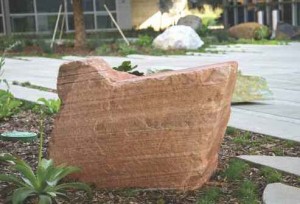
 Top 5:
Top 5: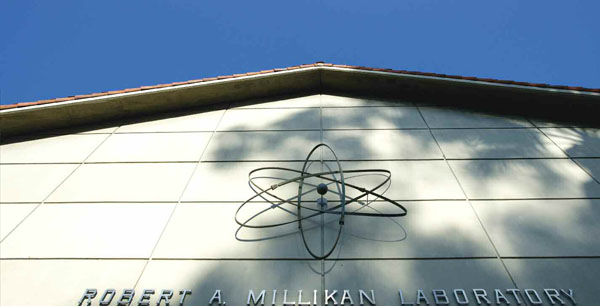
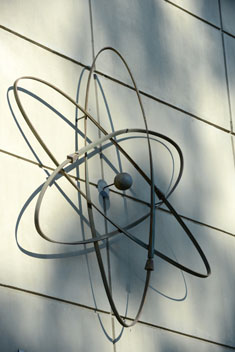 Commissioned for Pomona College’s new math, physics and astronomy lab back in 1958, the bronze atom sculpture facing College Avenue was designed by noted sculptor Albert Stewart, whose work adorns civic buildings nationwide, including the U.S. Mint in San Francisco. Before his death in 1965, Stewart created counterparts for the atom for the facades of Seaver North and South, with an image of cell division for biology and an array of particles for chemistry.
Commissioned for Pomona College’s new math, physics and astronomy lab back in 1958, the bronze atom sculpture facing College Avenue was designed by noted sculptor Albert Stewart, whose work adorns civic buildings nationwide, including the U.S. Mint in San Francisco. Before his death in 1965, Stewart created counterparts for the atom for the facades of Seaver North and South, with an image of cell division for biology and an array of particles for chemistry. Coolest name for a college band: The Inland Emperors. The group formed last fall, and Wes Haas ’15 and Lee Owens-Oas ’15 came up with the moniker during their Physics with Music class. As Haas explains, they were talking about how they now live in the Inland Empire and wondering whether anyone’s ever thought whether “there’s an emperor of the place” and—voilà—the band, which includes three more Sagehens, had its name. What do they play? “Loud rock music,” says Haas. Gigs so far have mostly been on campus, but with a name like that, we’re sure their reign will someday reach all the way to Riverside.
Coolest name for a college band: The Inland Emperors. The group formed last fall, and Wes Haas ’15 and Lee Owens-Oas ’15 came up with the moniker during their Physics with Music class. As Haas explains, they were talking about how they now live in the Inland Empire and wondering whether anyone’s ever thought whether “there’s an emperor of the place” and—voilà—the band, which includes three more Sagehens, had its name. What do they play? “Loud rock music,” says Haas. Gigs so far have mostly been on campus, but with a name like that, we’re sure their reign will someday reach all the way to Riverside.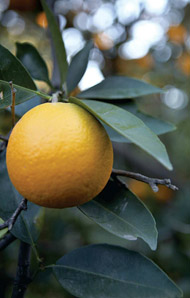 The O.J. flowing in campus dining halls these days doesn’t come from frozen concentrate, nor was it born thousands of miles away in Florida.
The O.J. flowing in campus dining halls these days doesn’t come from frozen concentrate, nor was it born thousands of miles away in Florida.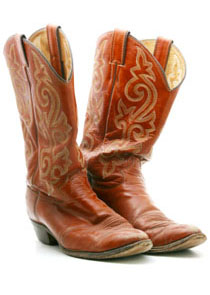 Trees, Ph.D.s and … country? Claremont is a long way from Nashville, but this school year brings two country superstars to
Trees, Ph.D.s and … country? Claremont is a long way from Nashville, but this school year brings two country superstars to